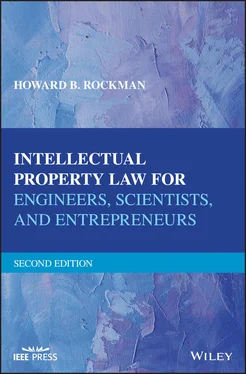When he returned to Menlo Park, Edison, with the help of Charles Batchelor, started experimenting to produce a practical subdivided electric light. They began by constructing lamps using spirals of platinum wire as the filaments or “burners.” They controlled these lamps with regulating devices designed to halt the current to the bulb if the platinum reached its melting point. Edison was so confident that he had solved the problem that he publicly announced that in “a few weeks” he would have a practical light bulb available. As a result of his announcement in 1878 that he was nearing completion of a practical light bulb, the stock exchanges witnessed a vast drop in gas company stocks, while others sought to invest in the new technology. Thus, Edison started the Edison Electric Light Company, whose backers were J. P. Morgan and the Vanderbilt family. Following his announcement, Edison and his workers continued their experiments, including testing generators to power the system and to prepare patent applications. Besides working on the light bulb, Edison felt it was important to construct and market an electric generating system that could be used to power the light bulbs he would sell to the public.
After the “few weeks” went by, his light bulb still did not work. The lamps using the platinum filaments flickered out of control, the filaments either broke or melted, and any light that was produced was too low. Edison, up to this time, was working on his own mental juices, and had not investigated prior work on incandescent lights to see what had been done by others, nor did he derive the details of the distribution and generation systems necessary to provide electricity to light his bulbs.
In November, 1878, Edison did two things. First, he hired a young physicist, Francis Upton, impressing upon his investors that he was ready to use the latest in modern science to assist in developing his inventions. Second, he began reviewing the state of the art as to every lighting system extant at that time. He reviewed the work of his competitors, studied prior patents, and, in effect, began all over again, looking for the proper filament for his light bulb.
Edison’s team saw that the amount of electrical current required to operate previously devised electric lighting systems was large. Edison was attempting to develop a light bulb that would provide the same convenience of gas light, and make it possible to turn one light on or off without affecting other lights. This led him to conclude that the lights would have to be in a parallel circuit, not a series circuit, since electric current would have to be delivered independently to each lamp. Although generally known, Edison’s team also noted that a system required to light a plurality of lamps would require either a high voltage or a large current. Large currents required thicker conducting wires, and copper was an expensive commodity in the late 19th century. If a system were developed using small currents and large voltages, each lamp would require a high resistance, which is the solution that Edison settled upon.
At that time, Edison was using platinum as the filament in his light bulb experiments. However, small lengths of platinum provided a low resistance, so Edison began using long spirals of thin platinum wire as filaments. These broke easily upon being heated to an incandescent temperature. For an extended period of time in 1879, Edison’s team failed in their attempts to create spiral filaments sufficient for a long‐lasting light bulb. What he did discover was that when efficient vacuum pumps were used to evacuate the air in the light bulb, the life of the platinum burner was extended, though not long enough for practicality.
During the early part of 1879, Edison and his team continued their light bulb experiments, and they also devoted a portion of their efforts to creating a generator that would create a high‐voltage system to light their bulbs. By the middle of 1879, Edison and his team still could not make the platinum filament lamp operate properly. In approximately October 1879, Edison and his team gave up on platinum and looked for other materials from which their filaments could be made. As a result of their intensive research efforts, the fact that carbon would provide the desired results was determined in a matter of a few weeks. Carbon had been used previously in the electric lamps of other inventors, but in those experiments the carbon either disintegrated or burned up. However, carbon appeared to be workable in the high vacuum created in Edison’s bulbs. Edison had been familiar with carbon, which he had used in his telephone receiver invention.
The records of Edison’s laboratory indicate that in the middle of October 1879, Batchelor and Upton were making notes of their measurements of carbon’s resistance and how to shape the carbon strands into spiral configurations. However, the carbon spirals always seemed to break. Batchelor’s notes indicate that by October 22, the team had performed experiments using several inches of carbonized cotton thread, which had a resistance of 100 ohms, significantly larger than the resistance of platinum. This lamp appeared to be as bright as a gas lamp, and did not flicker out. In the end, and after all the time, money, and experimentation, the result, using hindsight, was simply a glass globe with the air evacuated, in which a short strand of carbonized thread was mounted between two electrodes.
On New Year’s Eve of 1879, a public demonstration of the light bulb was made in Edison’s Menlo Park laboratory. The event was heavily attended by the press, shooting Edison’s popularity way up in the ratings. Edison filed for a patent on his invention on November 4, 1879, and the patent on the first practical light bulb was issued on January 27, 1880. Also, by the first demonstration, Edison’s workers had discovered that Bristol board made more reliable filaments than cotton thread.
Edison and his team not only invented the practical electric bulb, but an entire electric lighting system with all of the equipment required to make the incandescent light economical, operable, safe, and practical. For example, to make his system work, Edison also had to develop, create, and invent light sockets with on/off switches, safety fuses and insulating materials, constant‐voltage delivery systems, an underground conductor network, improved electrical generating dynamos, a durable long‐lasting light bulb, and parallel electric circuits. The Edison Electric Company established its first commercial central power station on Pearl Street in Lower Manhattan in New York City in 1882, furnishing electric power to a small area of the city. Other buildings set up dynamos in the basement to provide electricity for the building.
By the end of the 1880s, central electric power producing stations were established in many U.S. cities, each being limited to a few blocks in area due to the ineffective transmission of direct current (DC) electricity, to which Edison was wedded until his fight with the creators of alternating current, circuits, and systems was resolved many years later. Edison created several electric companies, and on April 24, 1889, they were all brought together to form the Edison General Electric Company. In 1892, Edison General Electric merged with Thompson‐Hudson, its leading competitor, the name Edison was dropped from the company name, and the company became General Electric Company. After the turn of the century, and facing financial difficulty, Edison sold his stock in the General Electric Company. To this day, the General Electric Company is a leading producer of electrical and electronic systems and equipment, including light bulbs. Edison never controlled the Edison General Electric Company, since the amount of capital required to develop the electrical and lighting industry necessitated the involvement of investment bankers, such as J. P. Morgan, and financiers such as Vanderbilt.
Читать дальше












